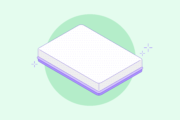Best Mattress for Seniors: Reviews and Buyer’s Guide

As you age, the more susceptible you become to recurring aches and pains. Instances of sleep disorders, including restless legs syndrome, sleep apnea, and insomnia, are higher, too. As you can imagine, these ailments can severely impede sleep.
Finding a comfortable mattress to support an aging body can prevent restless nights and lead to more comfort and support. In this guide, we’ll be discussing our recommended mattress for seniors as well as what you should be looking for in a new bed.
30 Second Summary: Best Mattress for Seniors
- Amerisleep AS3 — We recommend the Amerisleep AS3 because it contains both pressure-relieving memory foam and clinically-proven zoned support to promote healthy, pain-free sleep. Seniors are four times as likely to experience chronic back pain, and we believe this bed can make a difference.
- Zoma Mattress– The Zoma Sports mattress uses gel-infused memory foam to keep you cool, zoned support to reduce pressure points, and a responsive transition layer to keep you from sinking in your mattress. Plus, it comes with free shipping, a 100-night trial, and 10-year warranty.
Best Mattresses for Seniors
| Mattress | Highlights | Price | |
|---|---|---|---|
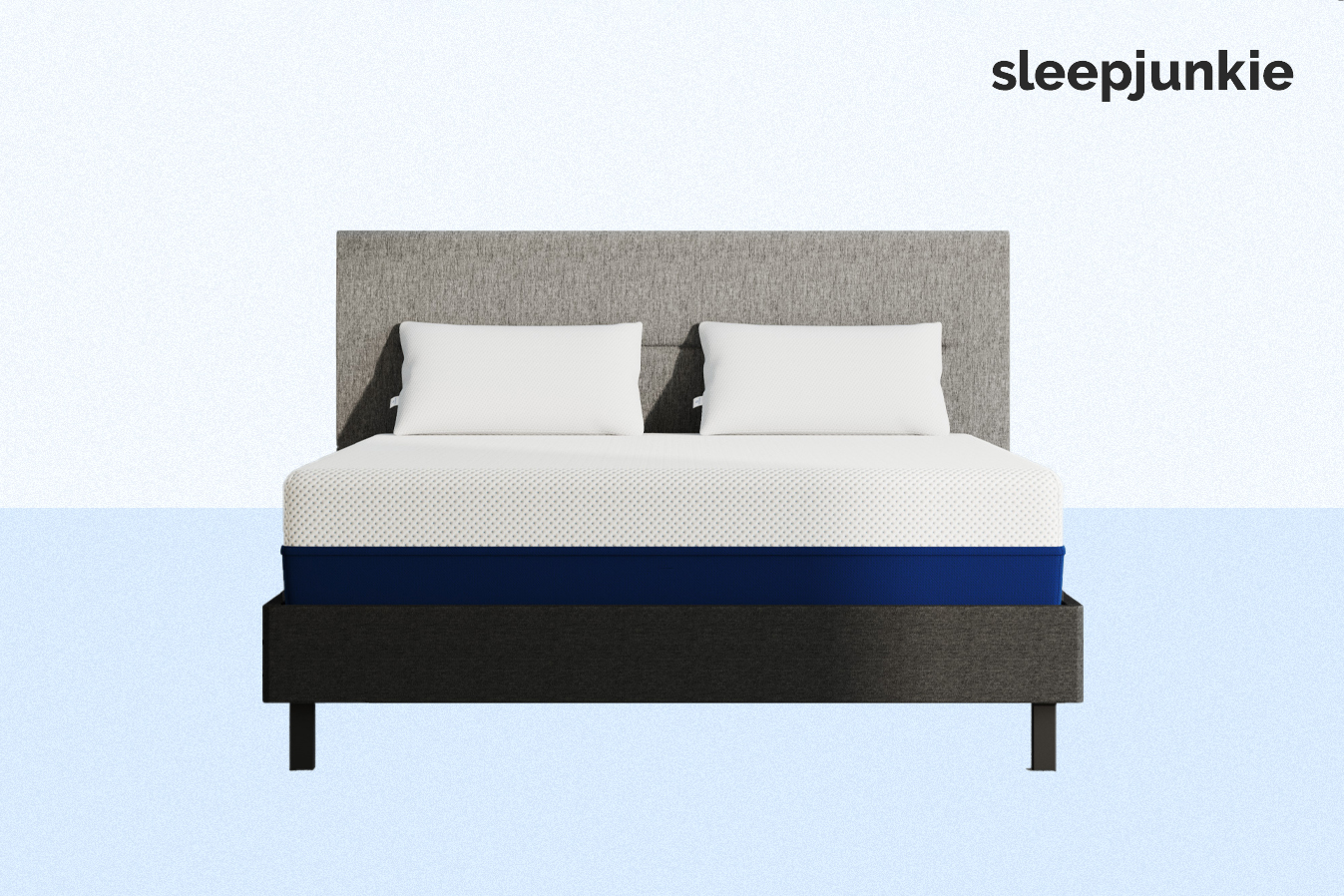 | Amerisleep AS3 | Features pressure-relieving, plant-based memory foam and advanced zoned support technologies to eliminate back pain. | $1399Buy Now |
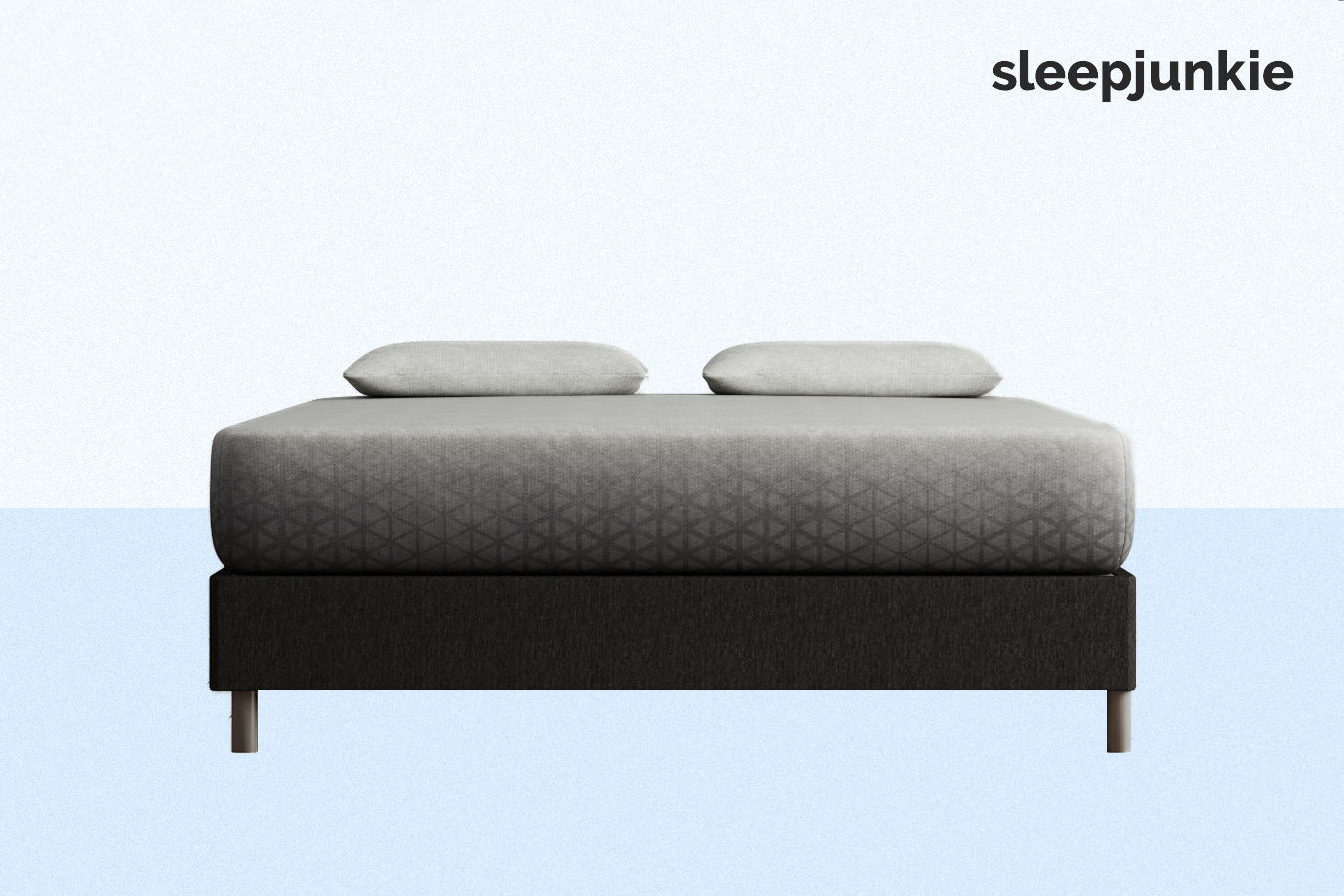 | Zoma Sports Mattress | Designed to help athletes sleeper better and recover quicker; features state-of-the-art sleep-enhancing technologies. | $750Buy Now |
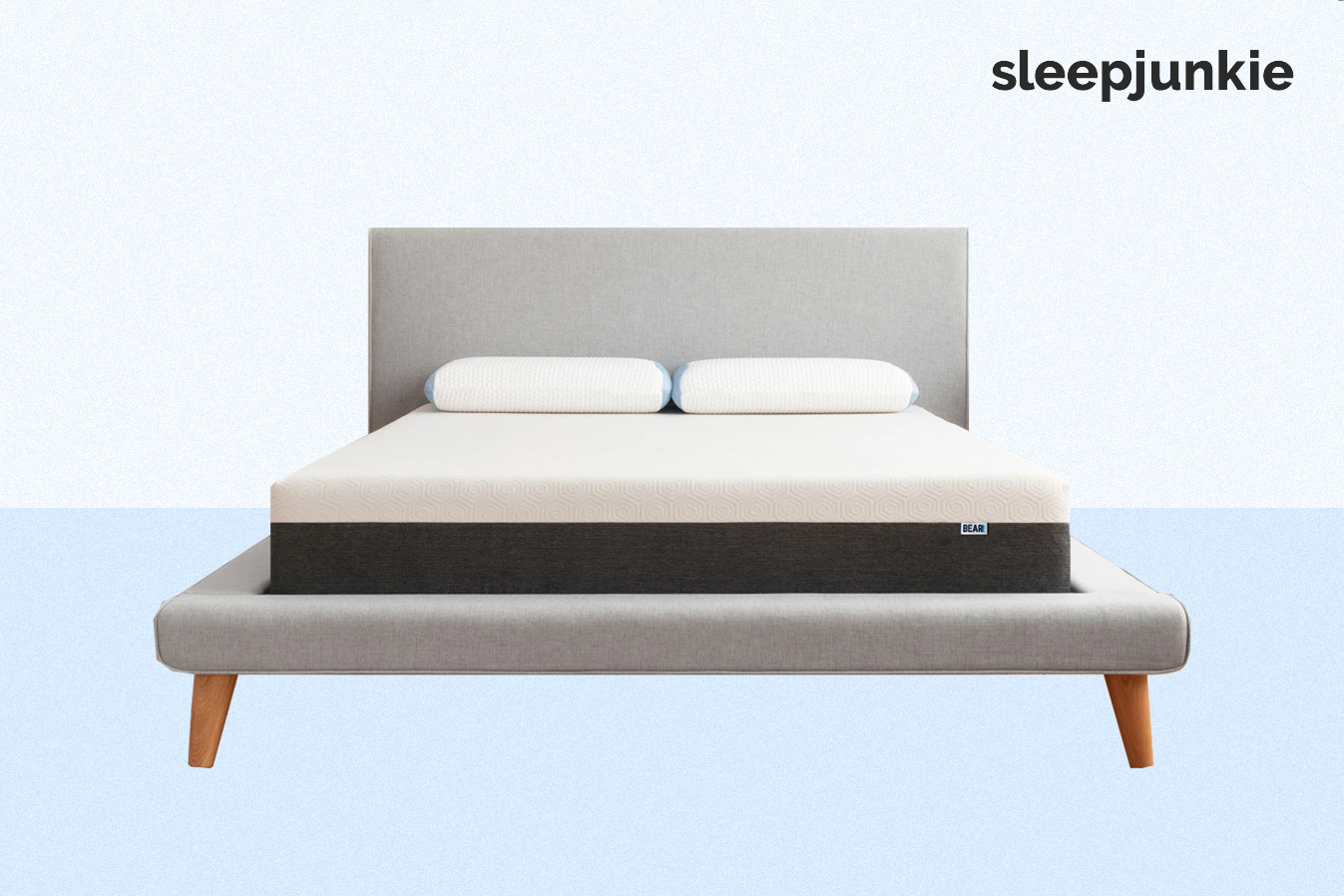 | Bear Mattress | Contains graphite cooling gels to promote sound sleep and prevent hot nights. | $840Buy Now |
1. Amerisleep AS3
 The AS3 should cushion your joints while maintaining healthy spinal alignment. Amerisleep uses a few state-of-the-art materials to craft this mattress. Let’s talk about how those can help you get a good night’s sleep.
The AS3 should cushion your joints while maintaining healthy spinal alignment. Amerisleep uses a few state-of-the-art materials to craft this mattress. Let’s talk about how those can help you get a good night’s sleep.
As a substitute for traditional memory foam, Amerisleep uses its innovative Bio-Pur® in each of their mattresses. A plant-based memory foam, Bio-Pur® is more responsive than it’s foam counterparts. While some foams cause you to sink into the mattress, Bio-Pur® has a bit of bounce and allows you to change sleeping positions or climb out of bed easily.
Another perk to using Bio-Pur® is its enhanced breathability. We naturally emit body heat when we sleep, and this material promotes airflow to keep hot air flowing out of the mattress.
In addition to their Bio-Pur® foam, Amerisleep’s mattresses come with a soft, lightweight cover designed to keep air flowing throughout the mattress. It’s common for seniors to experience uncomfortable sleeping temperatures, and these two materials work in tandem to keep you sleeping cool.
To offer you spinal support, Amerisleep includes HIVE® technology in the second layer of the AS3. HIVE® technology contains five comfort and support zones to promote neutral posture and alleviate pressure points. Under your neck, torso, and feet, HIVE® feels firmer to keep you more supported on the mattress. Whereas under your shoulders and hips, HIVE® feels softer and allows for deeper compression.
Every bed comes with a 100-night sleep trial and a 20-year warranty.
Amerisleep Highlights
- Pressure-relieving Bio-Pur® can alleviate pains and prevent new ones from forming.
- HIVE® technology promotes healthy spinal alignment.
- Compatible with all sleep styles.
2. Zoma Mattress
 Zoma markets its sports mattress towards athletes. Why? Athletes need to recover after a long active day and this recovery happens best during a good night’s sleep. By making their mattress cool to sleep on, as well as comfortable and supportive, Zoma is able to offer deep sleep and better recovery.
Zoma markets its sports mattress towards athletes. Why? Athletes need to recover after a long active day and this recovery happens best during a good night’s sleep. By making their mattress cool to sleep on, as well as comfortable and supportive, Zoma is able to offer deep sleep and better recovery.
The first layer of the Zoma is two inches of gel-infused memory foam designed to help alleviate pressure points. Plus, in the midsection of this layer, the foam is firmer, designed to help promote even spinal alignment.
Beneath the second layer is a highly-responsive layer of foam called Reactiv™ that gives the Zoma its bounce and comfort.
Zoma comes with free shipping, a 100-night trial, and a 10-year warranty.
Zoma Highlights
- 2 inches of gel memory foam
- Zoned support with a firmer midsection to promote spinal alignment.
- 7 inches of a supportive, durable core.
3. Bear
 Bear specializes in making mattresses for athletes, so their beds are designed to alleviate joint pain, promote a healthy spine, and help your body recover faster. Currently, they sell two mattresses: a memory foam mattress and a hybrid mattress, both of which are named Bear.
Bear specializes in making mattresses for athletes, so their beds are designed to alleviate joint pain, promote a healthy spine, and help your body recover faster. Currently, they sell two mattresses: a memory foam mattress and a hybrid mattress, both of which are named Bear.
We recommend seniors stick with Bear’s original memory foam mattress model to get the best night’s sleep. Let’s talk about the design of this unique mattress.
The cover of the Bear utilizes Celliant®’s FDA-determined technology. Celliant® helps keep your temperature cool by recycling your body heat to infrared energy. Infrared energy then promotes local circulation, which prevents you from overheating.
The top layer of the Bear is graphite-infused gel memory foam. Bear designs this layer to adapt to all body types, so it should mold to your body and alleviate built-up pressure. Plus, the gel infused in this layer works in conjunction with the Celliant® cover to prevent hot nights.
The next layer is responsive poly-foam to give you a more “on the bed” feel. The inclusion of this layer prevents you from sinking uncomfortably far in the memory foam and allows you to climb out of bed with ease.
Finally, the base of the Bear is high-density foam to prevent sinkage and premature deterioration. Though Bear uses durable foam to support their mattresses, they also back their beds with a 10-year warranty.
On their website, they rank their bed a 7 out of 10 on the firmness scale, making it a medium-firm mattress. You can buy the Bear exclusively online, and each mattress comes with a 100-night trial period.
Bear Highlights
- Designed to promote muscle recovery and ease pains.
- The Celliant®-infused cover regulates your temperature.
- Adaptable to all sleeping positions.
What Seniors Should Consider Before Choosing Their Next Bed
When researching for the best mattresses, consider your sleep style, budget, and personal preferences. However, beyond those primary factors, seniors should look for a mattress that includes responsive materials, offers exceptional spinal support, and keeps you sleeping at a comfortable temperature.
Spinal Support
Seniors often experience pain points that aren’t confined to one area; instead, they’re spread throughout the body.
To eliminate pain at the source, find a mattress that can promote a healthy spine. A lot of pain is a result of a misaligned or stressed spine, so nurturing your body’s natural curves can ease pressure points and reduce your discomfort.
Mattresses that contain a zoned support system or other supportive technologies are good options for seniors because they hold the spine in line while cushioning your joints.
Temperature Regulation
Finding a temperature neutral or a cooling mattress is the best way to combat hot nights. If you frequently wake up overheated, we also recommend keeping your windows closed and creating a cool sleeping environment with fans and the air conditioning. Even if it is cold outside, the temperature fluctuates throughout the night, which can disturb your sleep.
Responsive Materials
For seniors with chronic pain, shifting in the mattress, or climbing out of bed can be challenging. Mattresses that cause you to sink in the bed can create further discomfort or exasperate pains.
Seniors should look for a mattress with responsive comfort layers that’ll hold them more on top of the mattress rather than cradled within the bed. Bouncier materials allow you to change sleeping positions or get in and out of bed with ease.
Recurring Pain Points
Before deciding on your next mattress, consider your recurring pain points. While all of the mattresses we listed include pain-relieving technologies, some beds are better at targeting certain areas than others.
If you commonly experience back pain, you’ll want to look for a mattress that emphasizes promoting neutral spinal alignment.
However, if your pain is mostly confined to your hips and shoulders, a memory foam mattress with pressure-relieving technologies, such as the Wave or Layla, is more up your alley.
Sleeping Positions & Firmness Levels
Different sleep styles require different levels of support. How you prefer to sleep plays the most significant role in determining how firm your new mattress should be.
When you sleep on your side, your hips and shoulders take on all of your body weight. The best mattress for side sleepers is soft enough to relieve the pressure under those major joints but still firm enough to maintain healthy spinal alignment. These allow those major joints to compress in the bed, relieving built-up pressure and preventing pain points.
Back sleepers have a bit of wiggle room when deciding how firm their bed should be. Firm, medium, and soft mattresses can be a fit for back sleepers. The only thing to be watchful for is excessive sinkage. If you climb into bed and you can feel your hips sink below your thighs, your mattress is too soft.
Stomach sleeping is the unhealthiest sleep style, yet 16% of the population prefers to snooze this way. Unlike back sleepers, stomach sleepers may be hard-pressed to find a mattress that properly supports them. To sleep comfortably on your stomach, you need a firm mattress that’ll hold your torso in line with the rest of your body. If your bed has too much give, it’ll cause your midsection to sink, putting extra stress on your spine. If you are a stomach sleeper, we recommend trying to switch sleeping positions.
If you tend to switch sleep positions throughout the night, a medium mattress will probably be the most comfortable mattress for you because they’re the most adaptable.
Mattress Types
The first step in your search for a new bed should be deciding which type of mattress piques your interest. There are four main types of mattresses sold today— memory foam, latex, hybrid, and innerspring— and each has a unique feel.
Innerspring mattresses were the most common up until around a decade ago. These beds are characterized by a pocketed coil system and do not contain any foam layers. Any cushioning comfort you receive from an innerspring mattress comes from its cover. These beds don’t usually contour to your body, so they aren’t the best for pain relief.
We hesitate to recommend innerspring mattresses to seniors, as they are not designed for pain management.
If you desire the bounciness of an innerspring, choose a hybrid mattress. Hybrid mattresses combine foam layers and a pocketed coil system to create a cushioning but responsive sleeping surface. These beds are contouring to alleviate aches and pains, but still bouncy enough where you can comfortably move in the mattress.
Memory foam mattresses have been increasing in popularity within the last few years due to their ability to alleviate pain. It seems aches and pains can strike at any age, and many people are finding relief to their discomfort by switching to memory foam. Memory foam molds to your body’s curves and reduces pressure on your spine and joints, alleviating current pains and preventing new ones from forming.
The only thing to be hesitant about with memory foam is its responsiveness. Critical reviews of these beds mention feeling stuck in the mattress, which is something seniors want to avoid. If you’re interested in memory foam, choose a bed with responsive foams.
Latex mattresses are another foam option. These beds differ from memory foam in the fact that they’re bouncier and more responsive. Many reviews of latex beds mention them feeling firmer than memory foam, which is a result of the material’s increased bounce-back rate. If you prefer to shop eco-friendly, these beds are a great option.
The only concern we have with latex beds for seniors is their weight. Most latex mattresses should be rotated every few months to prevent sagging, and they aren’t the easiest to pick up and move.
Should I Invest in an Adjustable Bed?
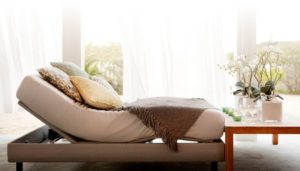 Simply put, yes. While we know adjustable beds can be quite pricey, they’re often worth the investment, especially for elderly individuals. If you have a little wiggle room in your budget and can afford to splurge on an adjustable base, it can completely upgrade your sleep experience.
Simply put, yes. While we know adjustable beds can be quite pricey, they’re often worth the investment, especially for elderly individuals. If you have a little wiggle room in your budget and can afford to splurge on an adjustable base, it can completely upgrade your sleep experience.
Adjustable bases offer a variety of sleep-promoting benefits, and for older people, these beds can help significantly reduce discomfort to get sound sleep.
The health benefits of adjustable bases include:
- Better mobility and ease of movement. Having the freedom to adjust the head and foot of the mattress can make it easier to switch sleep positions or climb in and out of bed.
- Reduced inflammation. Many people experience swelling in their legs, ankles, and feet. The foot articulation feature allows you to elevate your lower body to lower inflammation.
- Relief for arthritis pain. Arthritis is a common condition characterized by joint inflammation. The head and foot articulation features allow you to modify your sleeping position to take pressure off pain points.
- Improve circulation. You can adjust the angle of these beds to improve blood flow throughout your body. The Zero-Gravity position is one of the best for promoting sound sleep because it holds your body in a neutral position and promotes circulation and oxygen flow.
- Back pain relief. Adjusting your head to a 45-degree angle can reduce pressure on your lower back and alleviate pains.
- Improve digestion and prevent heartburn. Lying flat right after eating can cause acid reflux and delay digestion. Propping your head up in your mattress allows for healthy digestion and prevents gastrointestinal discomfort.
- Alleviate symptoms of sleep apnea. Obstructive sleep apnea and snoring are both caused by excess weight pressing on the windpipe while you sleep. Adjusting the angle of your head can open your airways and prevent snoring or sleep apnea symptoms.
Saving on New Mattress
- MLK Day Mattress Sales
- Sleep Awareness Week Mattress Sales
- Presidents Day Mattress Sales
- Memorial Day Mattress Sales
- 4th of July Mattress Sales
- Labor Day Mattress Sales
- Columbus Day Mattress Sales
- Black Friday Mattress Sales
- Cyber Monday Mattress Sales
Frequently Asked Questions
Is memory foam good for seniors?
Memory foam is an excellent material that can relieve all the aches and pains that a senior often has. Most memory foam mattresses are inexpensive and include a sleep trial so a senior can try the bed out and decide if it’s the right one. Plus, memory foam is available in a wide range of firmnesses to suit all sleeping styles and body weights.
Why do seniors fall out of bed?
A sleep disorder may cause a person to fall out of bed, no matter what their age is. Seniors may roll over their mattress’s side if they’ve had a recent change in mobility, such as a stroke, heart attack, or surgery. A senior may also fall out of bed if there’s a change they haven’t adjusted to, such as new bed frame or sheets with a slippery feel.
What are the alternatives to bed rails?
One DIY method is to wind a pool noodle or two around the sides of the bed, with a mattress pad or sheet keeping the noodle in place. This creates a gentle barrier that will prevent an older adult from rolling over the edge.
You can also lower your bed height with a shorter bed frame, decreasing fall distance. Placing a fall mat next to a bed can reduce injury should a fall occur.
What are common causes of falling in the elderly?
Seniors often fall because of normal body developments, such as poorer vision, weaker muscles, and stiffer joints. A chronic health condition such as heart disease, low blood pressure, and dementia can affect their sense of balance. Of course, some seniors may fall because of mundane things like a loose rug or a too-dim light that doesn’t illuminate their surroundings.
How can an older person get up off the floor?
The first step is to check for any injuries. If they’re not injured, a senior can try getting up by rolling onto their stomach. Then, they can push themselves up to their hands and knees slowly. From there, they should crawl over to an object like a chair that will allow them to pull themselves up.
Seniors may want to practice how they would get up from a fall, so that it feels second nature should any falls occur.
Did You Find Your Next Mattress?
We hope our guide has made the search for your next mattress that much easier. Online resources, such as customer reviews and mattress blogs, are great tools to utilize when looking for a new bed.
Don’t forget to take advantage of sleep trials, too. If you’re on the fence about which mattress is right for you, sleep trials allow you to try a new mattress commitment-free while you weigh your options.

